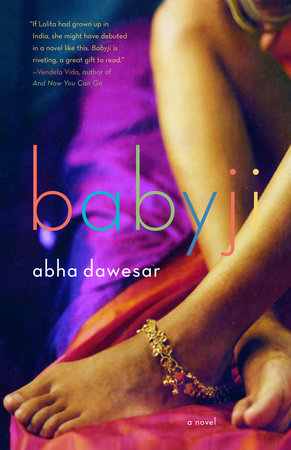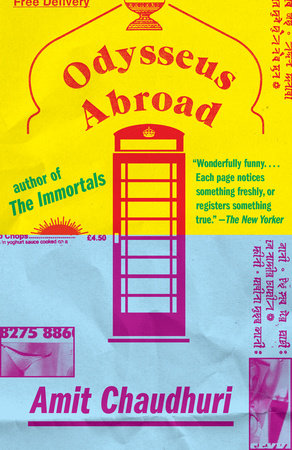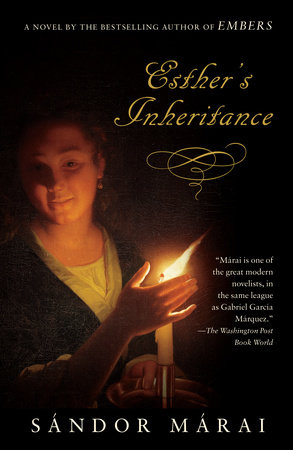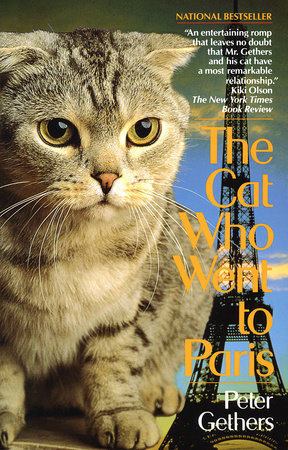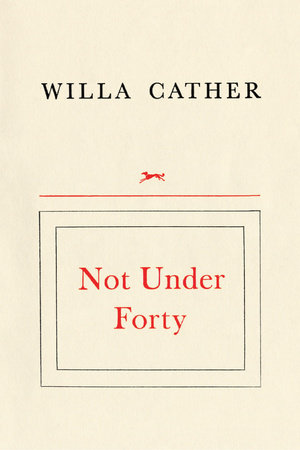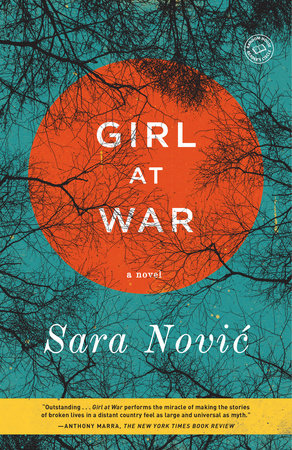How did you first hear about Lili Elbe?
Many years ago I read a brief mention of her, except the only name given was Einar Wegener, a well-regarded painter from Copenhagen married to another artist, Gerda Gottlieb. It described Lili—using Einar’s name—as the first successful recipient of sex reassignment surgery (a claim that would turn out to be not exactly correct; Lili was one of the first but probably not the first). I had always thought that Christine Jorgensen, a World War II vet from the Bronx, was the first, and so I wondered who this was and why history had mostly forgotten her? And I was curious that the story involved art, artists, and marriage.
This was so long ago that I did what a writer used to do before Google: I went to the New York Public Library and began to search for references to Einar Wegener. Nothing came up in my first attempt, which surprised me. So I turned to books about gender and identity, and that was how I came upon the name Lili Elbe. A number of references, short and often contradictory, ultimately led me to Lili Elbe’s semifictional diaries and correspondence, Man into Woman, which was published in 1933, not long after her death as a hybrid autobiography-history. This is where my true research began. Man into Woman is an important source for anyone who wants to know more about Lili Elbe, but, for me at least, it raised nearly as many questions as it answered.
What challenges were involved in creating a character that begins as a man and ends a woman?
One of the challenges of imagining Lili was thinking about past and present. She was very specific about how she thought of Einar: as another human being, another soul. According to Lili, Einar’s experiences were not her own. They belonged to someone else who was, as she put it, now dead. This probably does not reflect how many transgender men and women today describe their own experiences, but it is how Lili described hers. So a fundamental question for me was how to depict the past for a character who was very clear about making a break from her past. Whose childhood is remembered, which memories, both physical and emotional, belonged to whom? Lili thought of, and talked about, Einar as someone else, often describing him as her brother or a family member. I had to navigate this in order to tell the story with both authenticity and depth. Some of the language in The Danish Girl might strike today’s reader as out of sync with how we talk about the experiences of trans men and women, but it is authentic to how Lili talked about herself, how she saw herself.
How did you research the facts that are left to us?
In some ways writing a novel, especially a novel set in the past and about characters who once lived, is about amassing enough details and arranging them properly in order to offer the reader a verisimilitude that satisfies his or her curiosity about the story at hand. Yet all of this must be done in a voice and style that makes the story the novelist’s own. The Danish Girl was written with the assistance of five libraries, each of which provided me invaluable sources about the novel’s subjects, themes, and places: the Royal Library and the Royal Academy of Arts Library, both in Copenhagen; the library at the Dresden Hygiene Museum; the New York Public Library; and the Pasadena Public Library.
Some of the most important references for the novel include the news reports on Lili’s transition that appeared in the Danish press in 1930 and 1931, especially those in Politiken and Nationaltidende, which I read on microfiche at the Royal Library in Copenhagen. In 1931, after being betrayed by someone close to her, Lili Elbe set out to describe her life to the public, cooperating on a series of stories in Politiken. These stories told the world about her transition, describing her emotional journey as well as the doctors in Dresden who evaluated her and performed her surgeries. Months after these pieces ran, in a final gesture to Lili Elbe’s courageous and groundbreaking story, Politiken published her obituary under the byline of Fru Loulou. There’s reason to believe Lili played a role in preparing the obituary and perhaps even wrote it herself; hence, Lili, in characteristic fashion, scripted, or at least helped script, her own death notice.
Shortly after Lili Elbe died in 1931, her friend, Niels Hoyer, edited and shaped her diaries and correspondence and published them in a book under the title Fra Mand til Kvinde (Man into Woman). This was an invaluable source for me, especially about Lili’s transition, her stay at the Dresden Municipal Women’s Clinic, and the medical examinations and procedures. Lili anticipated the book’s publication and worked hard on the manuscript in the final year of her life. She was keen to tell her story, but she was also conscious of creating a sort of myth about herself. Just as Gerda’s highly stylized portraits depict an idealized version of Lili, Lili’s efforts in her autobiography—the news accounts, her writings that would become Man into Woman—are a stylized, or even self-mythologizing, version of her story. They are crucial sources, but they are not entirely factual, which, as a fiction writer, I found freeing. After all, this is a story about artists who lived with an ethos of creating and envisioning and forming their own reality.
How much of The Danish Girl is based on fact? Why did you choose at times to stray from the facts—especially with regard to Greta, whose name in real life is Gerda?
Some of the basic events of Lili’s transition are based on fact, including the first time Einar puts on a dress, the mysterious bleeding, and the stay at the Dresden Municipal Women’s Clinic. These events are based on the sources I describe above. But much of my novel is invented. Why? When I made my first research trip to Denmark and began amassing the outline of Lili’s life, I was struggling with how to interpret the story. Without a doubt, Lili is a pioneer of the transgender movement; from our perspective today we can look back and understand her place in history and see her story as one of tremendous courage and self-acceptance. She deserves to be remembered and celebrated as one of the first recipients of sex reassignment surgery, placing her at the forefront of a powerful and unfinished movement seeking civil rights and human dignity. But even in my early days of working on the book, I realized that our perspective from the future was not the same as her perspective at the time. I was more interested in how she thought of herself and her life as she lived it than how history thinks of her now. I understand the impulse to lionize her and define her story as one of undiluted triumph; but her story is more complex than that, and I have too much respect for her to reduce her life into simple terms.
One day while in Denmark, I took the train up the coast to see Kronborg Castle in Elsinore, once home, or so I thought, to the prince of Denmark who inspired Shakespeare’s Hamlet. While touring the castle, with its views over the Øresund to nearby Sweden, I learned how far from the facts Shakespeare had strayed to write one of the greatest works of literature. Before anyone accuses me of comparing myself to Shakespeare, let me be clear that that’s not what I mean by telling this story. But writers learn from the masters. One lesson I took from Shakespeare that autumn day inside the cold yellow-gray stone walls of Kronborg Castle was that writers throughout history have simultaneously turned to and away from facts to reach the emotional core of a story. I wanted to convey the emotional essence of Lili’s life as she herself perceived it, not as history would interpret it. She had left some of that self-perception in the historical record, via interviews and letters, Man into Woman, and through her legacy as Gerda’s greatest muse, but I believed there were vast blanks—unpainted canvases, so to speak—in need of filling in order to truly understand her heart. Those blank canvases in history are where I am drawn as a fiction writer.
The more I thought about Lili’s story, the more I came to see it through two lenses: one, the lens of love; and, two, the lens of art. First, love. We articulate and express many of our emotions through our relationships, and I came to believe that the key to understanding Lili was through Gerda—that the space between them, the private cave of their marriage, as I describe it in the novel, was where I wanted to take the reader. Some of this was documented, but some wasn’t, for the intimacies of a marriage, or any romantic relationship, often aren’t recorded for history. To write a love story, the story of a marriage, would require imagination and speculation—creating some of the details of how they lived, how they worked, how they fought, how they loved and cared for one another, turned to and away from one another. I decided to invent a character, Greta, who is both like the historical figure, Gerda, and not like her. Greta is inspired by the real Gerda, but many of the details of her life in the book are invented by me. I changed her name and her nationality (Gerda was Danish) as a way of saying this character conveys the emotional truth of the story while straying from some of the facts. If you read The Danish Girl, you might not learn everything there is to know about the actual Gerda, and yet I believe you will have a truthful portrait of who, at her essence, she really was.
The second lens through which I view Lili’s story is one of art. An artist sees that which does not yet exist. He or she imagines a future others cannot perceive. The artist—and the writer—reshapes reality so that it becomes even more vivid and lasting. The story of Lili Elbe is a story of art, of creating, of imagining that which is yet to be. Einar and Gerda were artists—they experienced the world, and themselves, through their art. I purposefully use Einar’s name in the previous sentence and not Lili’s because she insisted she was not an artist. She claimed she knew nothing about painting and looked at pots of oil paint and empty canvases with no impulse to create. She said painting belonged to Einar. But I disagree. Lili was an artist—her greatest creation was herself. She imagined a future life and did everything she could to create it. I spent many long hours looking at Gerda’s colorful paintings of Lili, trying to understand both the woman depicted and the woman doing the depicting. The Danish Girl emerged as much from these paintings as from anything else. They are not literal depictions of Lili; they are elevated renderings (just as Monet’s haystacks are not literal). Yet Gerda’s paintings of Lili capture her essence and spirit more vibrantly than any photographs of her. The world first met Lili through those paintings. Through those paintings I first came to understand her. The Danish Girl is not a biography of Lili Elbe, and yet I hope, through imagination and interpretation, it shows the colors and contours and shadows of her soul.
I should add that since I first published The Danish Girl in 2000, some scholars and writers have done important and much-needed work expanding our knowledge of Lili and Gerda, especially Sabine Meyer, Pamela Caughie, and Nikolaj Pors, who is writing what will be the definitive biography of Lili Elbe.
Greta is a fascinating character. Why does Greta encourage Einar to put on the dress in the book’s opening scene? What motivates her, and how does she reconcile these motives with the pain it also causes her?
Greta possesses an unusual combination of independence and fidelity. She is self-driven and fiercely individual, yet at the same time she holds a profound sense of dedication to her spouse. At the beginning of the novel she knows Einar at the most profound level. Greta encourages Einar to live as Lili because she knows this is who she is—and truth is always enough of a reason for Greta. Except nothing is ever that simple. Greta’s career takes off with her paintings of Lili. She needs Lili as much as Lili needs Lili. And I believe Greta is never fully honest with herself or Lili about how Lili affected her as an artist. Greta could not have become the artist of her ambitions without Lili. Their motives and actions are snarled and inextricable.
Why do you think the story of Lili Elbe was all but forgotten until recently?
One could speculate forever why the story was nearly forgotten. Lili underwent her surgeries in the early 1930s, a time of great anxiety in the world, especially the parts of Western Europe where she lived—Copenhagen, Paris, Dresden. The dark cloud of economic disaster, Fascism, and, eventually, Nazism was already rolling over the continent. It does not surprise me that this story was lost in the horrible events of the subsequent fifteen years. That is one reason. Yet, of course, another reason is the very nature of Lili’s story. Even today, transgender men and women face bigotry, ignorance, and often violence. But in the 1930s, Lili’s story was unimaginable to most of the world: with Lili Elbe, many were learning for the first time about what we now call sex reassignment surgery. Around the world newspapers reported Lili’s story with a mixture of awe and judgment. It was a big story at the time, but when Lili Elbe died in 1931, even the most sympathetic newspapers in Copenhagen reported on her as more of a one-of-a-kind than the beginning of a movement. Few saw her as a pioneer of anything or representing anything more than herself. And yet her legacy refused to be drowned by the closing waters of history. Her courage was too immense to be forgotten.
What inspired you about this story to make it the subject of your first novel?
Marriage fascinates me: how we negotiate its span, how we change within it, how it changes itself, and why some relationships survive and others do not. There isn’t a single marriage that couldn’t provide enough narrative arc for a novel. As I see it, the heart of this story lies in the intimate space that made up this marriage. It was in that space, protected by love, where Lili could first express herself freely, could first know herself truthfully. I was very curious about a marriage that could welcome Lili into it. Put simply, it is the question that we perpetually ask ourselves: What is love? What is love capable of?
Something else I came to understand when I began to read about Lili Elbe is that we all, in some ways, are born into a body that does not feel wholly like our own. We struggle throughout our lives to learn to accept the shell that transports us through this world, and many of us take great effort to change it. I believe everyone has at least once looked in the mirror and thought, “That is not me. I am someone else. The world cannot see me as I really am.” There is a universality to Lili’s question of identity—to know me, you must study my soul.







